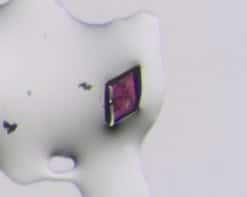
A vaccine made from double-layered polypeptide nanoparticles appears to protect mice against flu. The vaccine, delivered using dissolvable microneedle patches, might be adapted to treat other pathogens too.
Seasonal flu vaccines must be updated every year by predicting which strains will be the most common. Mismatched vaccines are obviously not very efficient and provide only limited protection, which increases the risk of a flu epidemic. Ideally, universal flu vaccines that are active against a broad range of influenza viruses would be better, but developing these is no easy task.
Researchers led by Bao-Zhong Wang of Georgia State University in the US have now built on recent studies that showed that the internal influenza protein nucleoprotein (NP) can induce T-cell immune responses in cells. Each double layer in their new nanoparticle vaccine contains a core made of peptides from this nucleoprotein. The outer coating of the nanoparticle contains four peptides from the ectodomain epitopes of the influenza A M2 protein (M2e). This protein is a promising target for “universal” flu vaccines because it exists in most human seasonal influenza A viruses.
Long-lasting immunity
Wang and colleagues administered their vaccine using a dissolvable microneedle patch and found that it provided mice that had been exposed to the influenza A virus with long-lasting immunity. The nanoparticles appear to trigger immune responses not only in T lymphocytes, as expected, but B lymphocytes as well, so providing broad cross-protection.

Nanofibrous membrane could offer bioprotection
The team, which includes researchers from the Georgia Institute of Technology, Emory University, both in the US, and Henan Normal University in China, says that it now plans to improve its vaccine by adding the “stalk” (the inside portion of the influenza virus’ surface protein) to its coating. Seasonal flu vaccines provide immune protection by targeting the head of this surface protein (known as hemagglutinin), but this head varies greatly from one virus strain to the next, explain the researchers. The stalk, on the contrary, does not vary so much and so might be exploited to develop a universal protective vaccine, they say.
Their technique, which is detailed in PNAS 10.1073/pnas.1805713115, might also be used to develop vaccines for other pathogens, and perhaps even cancers, they add.



